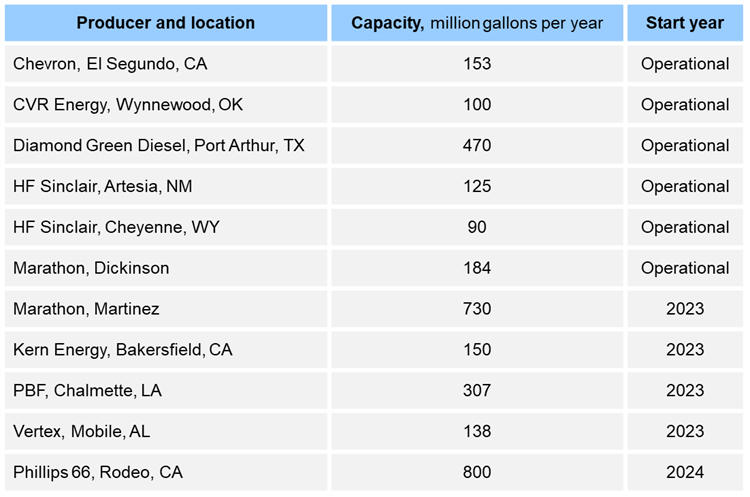
The transportation sector is a major contributor to global greenhouse gas (GHG) emissions but is also at the forefront of energy transition. ADI has previously written about electrification of transportation and the supporting infrastructure needs and alternative fuels such as hydrogen and bio-based ethanol.
U.S. diesel demand in 2019 was 122 million barrels and despite life returning to normalcy, diesel demand has remained low at 119 million barrels in 2022. On the other hand, renewable diesel demand in the U.S. grew from 2 million barrels in 2021 to almost 3 million barrels in 2022. The share of renewable diesel and other components such as SAF and renewable naphtha is only expected to grow.
Renewable diesel demand is mainly driven by California’s low-carbon fuel standard (LCFS) that sets a certain GHG intensity limit for fuels. Apart from California, Oregon and Washington have also adopted their own LCFS programs. Additionally, there are also several regulations and tax credits supporting production and utilization of sustainable aviation fuel (SAF). Subscribe to ADI’s SAF Tracker to learn more.
As refiners adapt to energy transition and consider low-carbon alternatives, they are looking at existing refining capacity and converting it into renewable diesel- and SAF-producing facilities. Refinery conversions are an economical and faster means to reach target energy transition markets. Large refiners in the U.S. including Marathon, HollyFrontier, and Phillips 66 are among those converting their refineries to produce renewable fuels. Exhibit 1 below summarizes refinery conversions in the U.S.

Exhibit 1. Refinery conversions and renewable diesel capacity in the U.S.
We expect that more refineries will be converted to meet growing renewable fuels demand in the coming years as opposed to new greenfield projects. ADI Analytics is closely following these trends and developments in refining. Contact us to learn more.
Panuswee Dwivedi



















